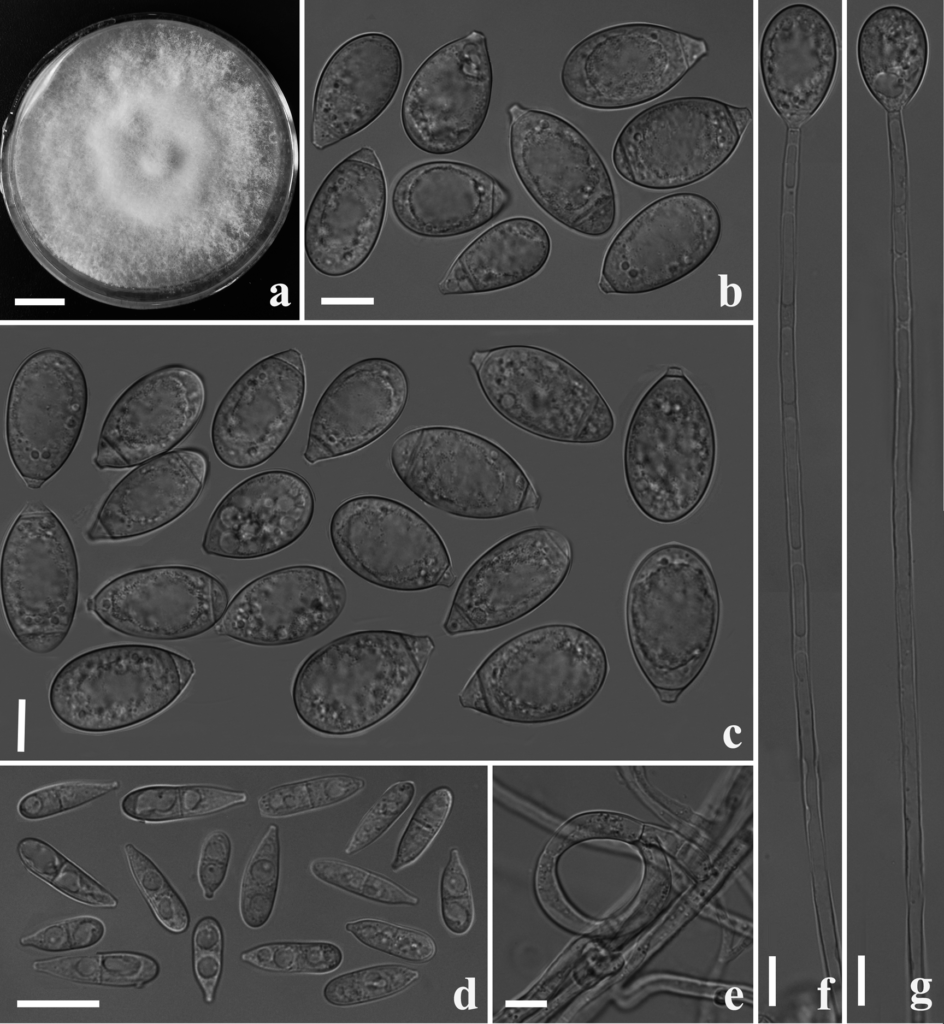Drechslerella daliensis F. Zhang, X.Y. Yang & K. D. Hyde, sp. nov. FIGURE 1.
MycoBank number: MB; Index Fungorum number: IF ; Facesoffungi number: FoF 10565;
Etymology: The species name “daliensis” refers to the name of sample collection site: Dali City, Yunnan Province, China.
Description: Saprobic on soil. Isolation grew slowly on CMA, reaching a colony-diameter of 50 mm after 18 days incubation at 26°C. Colonies white, cottony. Mycelium colourless, septate, branched, smooth. Conidiophores hyaline, erect, septate, unbranched, bearing a single conidium at the apex, 125-335 (216.5) µm long, 3-6.5 (4.5) µm wide at the base, gradually tapering upwards to a width of 2-3.5 (2.8) µm at the apex. Conidia two types: Macroconidia hyaline, smooth, ellipsoid, broadly rounded at the apex, truncate at the base, 1-3-septate, mostly 2-septate, 20-49.5 (38.6) × 8.5-15 (11.8) µm. Microconidia hyaline, smooth, clavate or bottle-shaped, broadly rounded at the apex, truncate at the base, 6.5-22 (15.4) × 3.5-7 (4.8) µm, 0-1-septate. Chlamydospores not observed. Capturing nematodes with contricting rings.
Material examined: CHINA, Yunnan Province, Dali City, burned forest in Yushan Mountain in Cangshan Mountain, saprobic on soil, 25 July 2017, XJ. Zhou, YXY16-1 (CGMCC3.20131, holotype!), ex-type living culture, DLU16-1.
Sequence data: ITS:MT592896

FIGURE 1. Drechslerella daliensis (CGMCC3.20131, holotype!). a Colony. b, c Macroconidia. d Microconidia. f, g Conidiophore. e Trapping-device: constricting rings. Scale bars: a = 1.0cm, b-g = 10 um.
